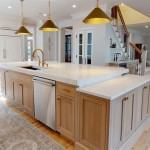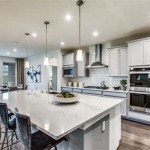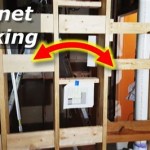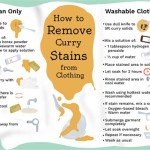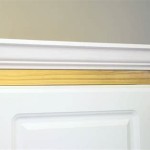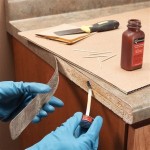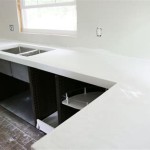What Are Kickboards in a Kitchen Sink?
Kickboards, also known as toe kicks, are recessed areas located at the very bottom of kitchen cabinets, including those beneath the sink. They create a space between the cabinet and the floor, allowing users to stand closer to the countertop for improved comfort and ergonomics during food preparation, cleaning, and other kitchen tasks.
Key Features of Kitchen Sink Kickboards
- Improved Ergonomics
- Enhanced Comfort
- Protection for Cabinetry
- Aesthetic Appeal
Without a kickboard, users would have to stand further back from the counter, straining their backs and shoulders. This recessed space provides crucial clearance for feet and legs, enabling a more natural and comfortable working posture. This is particularly important for extended periods of kitchen use.
Materials Used for Kickboards
- Solid Wood
- Plywood
- MDF (Medium-Density Fiberboard)
- PVC (Polyvinyl Chloride)
Kickboards are typically constructed from materials that match the cabinetry, ensuring a seamless and integrated look. Common materials include solid wood, plywood, MDF (Medium-Density Fiberboard), and PVC (Polyvinyl Chloride). The choice of material impacts the kickboard’s durability, water resistance, and aesthetic properties. For example, solid wood offers a premium look but requires more maintenance, while PVC is highly water-resistant, making it a practical choice for areas prone to spills.
Installation Methods for Kickboards
- Direct Attachment to Cabinet Frame
- Clip-On Systems
- Adjustable Legs
Installation methods vary depending on the cabinet design and the type of kickboard. Common methods include direct attachment to the cabinet frame using screws or nails, clip-on systems that allow for easy removal and replacement, and adjustable legs that facilitate leveling on uneven floors. A properly installed kickboard should fit snugly against the cabinet and floor, providing a secure and stable base.
Benefits of Kickboards Beyond Ergonomics
- Protection against Impacts
- Concealment of Plumbing and Wiring
- Enhanced Aesthetics
Beyond ergonomic benefits, kickboards also offer practical protection for the base of the cabinets. They act as a barrier against impacts from feet, dropped objects, and cleaning equipment, preventing damage to the cabinet structure. Additionally, kickboards effectively conceal plumbing lines, electrical wiring, and other under-sink components, contributing to a cleaner, more organized appearance. This concealment improves the overall aesthetics of the kitchen by hiding potentially unsightly elements.
Maintenance and Cleaning of Kickboards
- Regular Cleaning
- Addressing Water Damage Promptly
- Inspecting for Loose Fittings
Regular cleaning is essential for maintaining the appearance and longevity of kickboards. Wipe them down with a damp cloth and mild detergent to remove dirt, grime, and food spills. Address any water damage promptly to prevent swelling, warping, or the growth of mold and mildew. Periodically inspect the kickboards for loose fittings or damage and make necessary repairs to ensure they remain securely in place.
Design Considerations for Kickboards
- Height and Depth
- Material Selection
- Ventilation Requirements
When choosing or designing kickboards, consider the overall kitchen design, desired functionality, and specific needs. The height and depth of the kickboard impact both ergonomics and aesthetics. Material selection influences durability, water resistance, and maintenance requirements. For cabinets housing appliances that generate heat, such as dishwashers or built-in ovens, ensure adequate ventilation is incorporated into the kickboard design to prevent overheating. This might involve incorporating vents or grilles into the kickboard.
Repairing and Replacing Kickboards
- Assessing the Damage
- Matching Replacement Materials
- Seeking Professional Assistance
Damaged kickboards can detract from the overall appearance of the kitchen and compromise their protective function. Assess the extent of the damage to determine whether repair or replacement is necessary. If replacing a kickboard, ensure the replacement material matches the existing cabinetry in terms of color, finish, and material type. For complex repairs or replacements, consider seeking professional assistance to ensure a proper and seamless fit. This is especially important when dealing with intricate designs or challenging materials.
Understanding the role and importance of kickboards in a kitchen sink setup can significantly impact both the functionality and aesthetics of the space. Properly chosen and maintained kickboards contribute to a more comfortable, efficient, and visually appealing kitchen environment.

How To Make The Most Of Your Kitchen Kickboards Houzz

The Do S And Don Ts Of Cleaning Stainless Steel Kitchen Kickboards Door Company

How To Diy Your New Kitchen Kickboards The Door Company

Kitchen Storage Tips And Tricks

Kitchen Plinths Kickboards Plain Or Torus Plinth

Kick Off How To Make The Most Of Kitchen Kickboards Houzz Au

Not All Kickboards Are Equal Rod S Kitchens

900mm Gloss White Freestanding Kickboard Vanity Cabinet Myhomeware

1200mm Gloss White Freestanding Kickboard Vanity Cabinet Myhomeware

Bespoke Plinth Faktum Ltd
Related Posts

